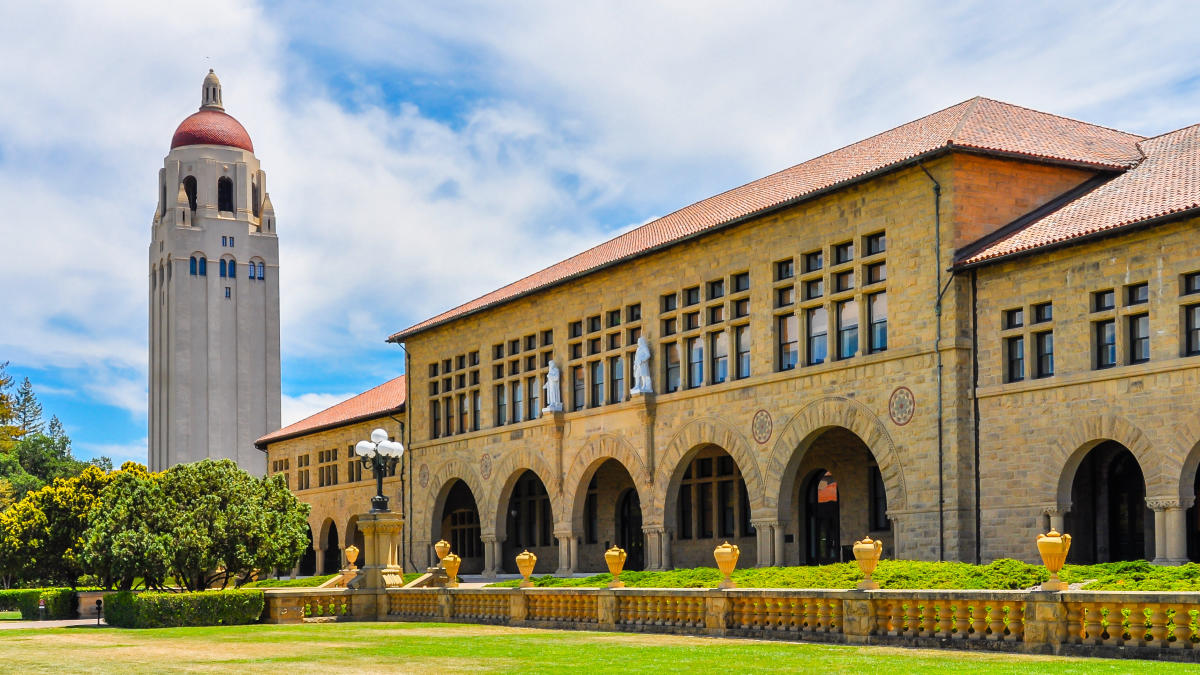Stanford University: A Legacy of Innovation and Excellence
Introduction
Stanford University, nestled in the heart of Silicon Valley, stands as one of the world’s leading educational institutions. Renowned for its entrepreneurial spirit, groundbreaking research, and academic excellence, Stanford has played a pivotal role in shaping modern technology and thought leadership across various disciplines. This article delves into the university’s history, academic programs, research initiatives, campus life, and its profound impact on global innovation and society.
History and Founding
Stanford University was founded by Leland and Jane Stanford in 1885 in memory of their only son, Leland Stanford Jr., who had died of typhoid fever at age 15. The Stanfords envisioned a “university of high degree” that would “qualify its students for personal success and direct usefulness in life.” The university opened its doors on October 1, 1891, with a faculty of 15 professors and an initial cohort of 555 students, comprising both men and women.
From its inception, Stanford was intended to be nonsectarian, coeducational, and to produce cultured and useful citizens. This progressive vision was reflected in its early adoption of a flexible curriculum and its encouragement of independent thinking and practical applications of knowledge.
Academic Programs
Stanford offers a diverse range of undergraduate, graduate, and professional programs across seven schools: Humanities and Sciences, Engineering, Earth, Energy & Environmental Sciences, Education, Law, Medicine, and Business. Each school is committed to fostering interdisciplinary collaboration and pioneering new fields of study.
**Undergraduate Education**
Stanford’s undergraduate program emphasizes a liberal education, critical thinking, and hands-on learning. Students can choose from more than 65 major fields of study, ranging from humanities and arts to natural sciences and engineering. The university’s flexible curriculum allows students to explore different disciplines before declaring a major, fostering a well-rounded intellectual foundation.
The Bing Overseas Studies Program enables students to broaden their global perspectives by studying abroad in over a dozen countries, enriching their academic and cultural experiences. Additionally, the Haas Center for Public Service encourages students to engage in community service and social impact initiatives, reflecting Stanford’s commitment to public welfare and civic responsibility.
**Graduate and Professional Education**
Stanford’s graduate programs are renowned for their academic rigor and emphasis on research and innovation. The university offers over 90 graduate fields of study, with prominent programs in business, law, education, engineering, and medicine. The interdisciplinary nature of Stanford’s graduate education fosters collaboration across various fields, leading to groundbreaking research and advancements.
The Graduate School of Business (GSB), one of the top business schools globally, offers MBA, MSx, and PhD programs. The Stanford Law School (SLS) is distinguished for its innovative approaches to legal education, emphasizing experiential learning and public service. The School of Medicine is at the forefront of medical research and education, focusing on translational medicine to improve patient care.
Research and Innovation
Stanford University is synonymous with innovation and cutting-edge research. Its proximity to Silicon Valley and strong ties with industry leaders have positioned it as a powerhouse of technological advancement and entrepreneurship.
**Research Initiatives**
Stanford’s research spans a vast array of disciplines, with significant contributions to science, engineering, medicine, social sciences, and the humanities. The university is home to numerous research centers and institutes, such as the Stanford Institute for Economic Policy Research (SIEPR), the Stanford Woods Institute for the Environment, and the SLAC National Accelerator Laboratory.
In recent years, Stanford researchers have made significant strides in artificial intelligence, biomedical engineering, and sustainable energy. The university’s emphasis on interdisciplinary research has led to innovations like CRISPR gene editing, autonomous vehicles, and breakthroughs in quantum computing.
**Entrepreneurship and Industry Collaboration**
Stanford’s entrepreneurial ecosystem is a cornerstone of its identity. The university has produced an impressive roster of alumni who have founded or led major technology companies, including Google, Hewlett-Packard, LinkedIn, and Instagram. The Stanford Research Park and the Stanford Venture Studio provide resources and support for students and faculty to translate their ideas into viable businesses.
The Hasso Plattner Institute of Design, commonly known as the d.school, fosters a culture of creativity and human-centered design thinking. It serves as a hub for students from diverse disciplines to collaborate on innovative solutions to real-world problems.
Campus Life and Student Experience
Stanford’s 8,180-acre campus is one of the largest in the United States, featuring state-of-the-art facilities, lush landscapes, and iconic architecture. The university offers a vibrant campus life, with a plethora of extracurricular activities, clubs, and organizations catering to a wide range of interests.
**Residential Life**
Stanford’s residential system is designed to create a close-knit and supportive community. Freshmen are assigned to one of several residential neighborhoods, where they live with upperclassmen Resident Assistants (RAs) who provide guidance and support. The housing options include traditional dormitories, theme houses, and cooperative housing, each offering unique living experiences.
**Student Organizations and Activities**
The university boasts over 600 student organizations, covering interests such as academic and professional development, cultural and identity groups, performing arts, media, and sports. The Associated Students of Stanford University (ASSU) serves as the student government, advocating for student interests and organizing campus-wide events.
Stanford’s athletic programs are among the best in the nation, with 36 varsity teams competing in the NCAA Division I Pac-12 Conference. The university has a rich tradition of athletic excellence, having won more than 150 national championships across various sports.
Diversity and Inclusion
Stanford is committed to fostering a diverse and inclusive community. The Office of Inclusion, Diversity, Equity, and Access (IDEAL) works to ensure that all members of the Stanford community feel valued and supported. The university offers various resources and programs to promote diversity, equity, and inclusion, including cultural centers, support services, and scholarships for underrepresented students.
Impact on Global Innovation and Society
Stanford University has had an indelible impact on global innovation and society. Its alumni, faculty, and research have played pivotal roles in shaping modern technology, healthcare, policy, and culture.
**Technological Advancements**
Stanford’s contributions to technology are unparalleled. The university’s faculty and alumni have been instrumental in the development of the internet, semiconductors, and numerous software and hardware innovations. Companies like Google, founded by Stanford PhD students Larry Page and Sergey Brin, have revolutionized information access and communication.
**Healthcare and Medicine**
Stanford’s School of Medicine and its affiliated hospitals have been at the forefront of medical research and patient care. Innovations in genomics, cancer treatment, and neuroscience have stemmed from Stanford’s research labs, significantly advancing healthcare practices and improving patient outcomes.
**Policy and Social Change**
Stanford’s impact extends beyond technology and medicine. The university’s scholars have influenced policy and social change through research in economics, law, education, and public health. The Hoover Institution, a public policy think tank at Stanford, has produced influential research on economics, political science, and international relations.
**Cultural Contributions**
Stanford’s contributions to the arts and humanities are also noteworthy. The university has nurtured prominent writers, artists, and thinkers who have enriched global culture. The Stanford Arts Institute and the Cantor Arts Center serve as hubs for artistic expression and cultural exchange.
Conclusion
Stanford University stands as a beacon of excellence, innovation, and societal impact. From its humble beginnings to its current status as a global leader in education and research, Stanford has remained true to its founding mission of producing cultured and useful citizens. Its contributions to technology, medicine, policy, and culture have left an indelible mark on the world, embodying the university’s motto, “Die Luft der Freiheit weht” – “The wind of freedom blows.” As Stanford continues to push the boundaries of knowledge and innovation, it remains a cornerstone of global progress and a testament to the power of education.



